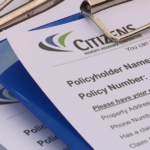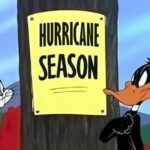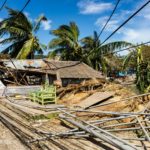Your homeowners insurance, such as the one offered by Culbertson Agency, provides extensive coverage. However, it’s important to understand that there are exceptions. Before selecting a plan, familiarize yourself with what is and isn’t covered by your standard homeowners insurance policy. Even if you have a comprehensive plan, it’s essential to be prepared and know that Homeowners Insurance Doesn’t Cover everything.

Here’s 10 things that your home insurance probably doesn’t cover:
1. Construction Damage
If you’re working on a home renovation and something breaks, that’s not covered by most home insurance policies. If a contractor breaks a pipe, damages property or uses a defective part, it’s up to their individual liability coverage provider to cut the check.
When hiring construction teams, always request a physical or digital copy of their contractor’s insurance certificate. To play it safe, you might consider adding a “builder’s risk policy” on top of your current coverage, as an uninsured worker’s mistakes might dip into your wallet.
2. Flood
Floods are excluded on almost every homeowners policy. Unfortunately, here in the sunshine state, we’re no strangers to this type of water damage, especially in southwest Florida. Although, you may not in a primary high risk flood zone, all of SWFL is in a flood zone.
The federal government’s National Flood Insurance Program covered 5,081,470 policy holders in 2016 alone. For more information on what is and isn’t covered, head over to our flood insurance page.
3. Earthquake
Just like flooding, earthquakes are another natural disaster not covered by standard homeowners insurance. Various policies specifically for this type of insurance have very particular ways of defining which level of earthquake and extent of damage is covered, so be sure to do thorough research before selecting the right plan.
4. Sewer Backups
Many unfortunate homeowners experience a sewage system overflow. Not only is the cleanup long and unpleasant, but most insurance policies won’t lend hand either. This is especially painful for your savings, as this water damage can ruin floors, walls, electrical systems and more.
Sewer backup is often an additional form of coverage you can add on top of your standard homeowner’s policy. Living in somewhere like Florida, it’s definitely worth considering opting for both flood and sewer rider plans.
5. Termite Damage
If you have some pesky bugs eating your wood, that’s a problem. Termite damage is not covered by most homeowners insurances, which is a real scare— as they cause roughly $5 billion dollars in damage a year in the U.S., according to the National Pest Management Association.
These critters often chew away at your home quietly for some time before the damage goes noticed. If caught early enough, you can save yourself some serious money. Consider bringing in a pest control specialist to inspect your home at least once a year.
6. Fine Art or Jewelry
Even if your homeowners insurance offers protection against jewelry or artwork, collectors of expensive pieces should err with caution. These costly possessions might require an additional rider plan to ensure you are reimbursed the appropriate amount.
7. Dog Attacks by “High-Risk” Breeds
The average liability payout for a dog-related injury claim was $37,051 in 2017, according to data from the Insurance Information Institute and State Farm, which is up 93.4 percent from 2003. Worst of all, some homeowners insurance plans won’t cover bites or injuries from dog attacks, particularly based on the breed of your pet.
Many larger canine breeds may fall onto their “aggressive” or “high-risk” breed list and be excluded from the policy. Pitbulls and German shepherds often make the list, but that’s just two. Be sure to check if Fido qualifies or not before locking into a new insurance plan.
8. Pool Injuries
Does your inground pool have a diving board? That might be a “high-risk” feature that could cause your homeowners insurance premium to increase or disqualify a home from coverage altogether.
In general, pools tend to increase your liability need, since a high amount of fatal drownings occur in residential pools. Though some homeowners insurance policies will cover pool accidents, be sure to check how much damage it covers.
9. Cash Theft
Although some homeowner’s insurance policies do cover some cash theft, it’s typically capped around $200 or at a very low amount. This extends to those avid coin collectors, not just paper cash storage. If you have a large sum of cash stashed away somewhere in your home, consider putting it in the bank.
10. Mold
Although some homeowners insurance policies cover mold damage, there’s often a few catches. For example, if your pipe was damaged due to lack of maintenance, the insurer could reject the claim. Or, if accepted, your coverage could be limited.
The best way to avoid paying for mold damage is to prevent it in the first place. If you’ve recently experienced water damage in your home, read our article on preventing mold growth.
Does your Homeowners Insurance Offer the Right Protection?
Some robust homeowners insurance policies cover more than your standard package. Do you know how well insured you are for when disaster strikes?
Get a free quote from our team at Culbertson, today. We’re here to help you get the best price and most extensive coverage for your needs in Southwest Florida.









